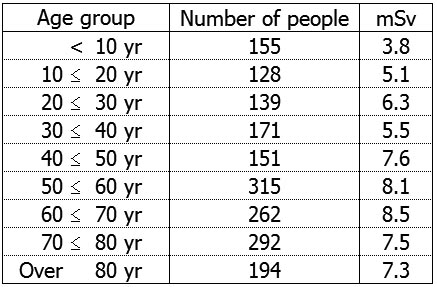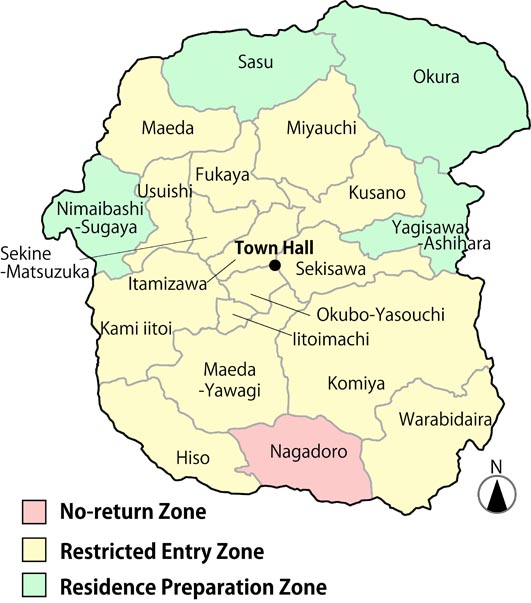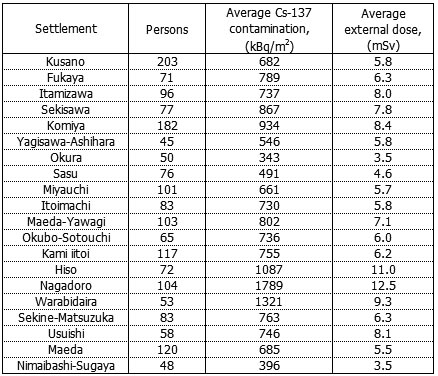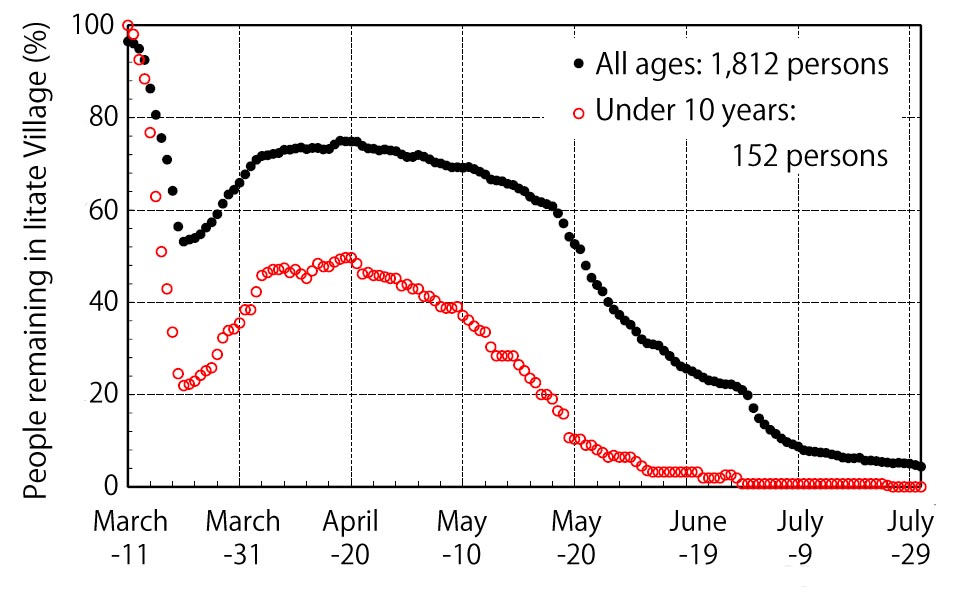Iitate villagers’ provisional return to the village As we proceeded with the interview survey, we learned that many of those who relocated swiftly after the March 11 earthquake and the nuclear accident temporarily returned to Iitate Village after a while and then evacuated again after the village was designated a planned evacuation zone. Figure 3 is a graph of the percentage of villagers who were in the village. This graph explicitly indicates an interesting tendency in the change in population in the village; namely, those who evacuated immediately after the earthquake started to return to the village after March 21 and evacuated again after April 22, when the village was designated a planned evacuation zone. If the planned evacuation zone had been designated one month earlier, a major part of the early-period exposure in the village would have been prevented. The reasons for the return of those who had evacuated quickly were as follows: ・The life in evacuation areas was difficult in many ways. ・Villagers were assured by hearing lectures organized by the government that the radioactive contamination would not pose a problem. ・Companies in Iitate Village requested employees to return in order to restart business. Let us note that March 21 was the day when Prof. Shunichi Yamashita, who had come from Nagasaki University to Fukushima as the prefectural risk advisor and who is well known for stating that “Radioactivity is nothing to worry about if you keep smiling,” delivered his first talk in Fukushima.
Comparison with the Fukushima Health Management Survey It was surely the Japanese government’s job to assess the radiation dose received by people in the areas surrounding the Fukushima Daiichi Nuclear Power Station accident, but this responsibility was entirely thrown over to the Fukushima Prefecture at an early stage after the accident. The notorious Fukushima Health Management Survey (FHM survey) is being conducted as a result. In the FHM survey, the early-stage external radiation exposure has been assessed on the basis of the results of an activity questionnaire survey filled out by Fukushima residents. This questionnaire is used as the basic survey. Based on the FHM survey report, the average exposure of the 3,102 Iitate villagers who responded to the questionnaire was an estimated average dose of 3.6 mSv, which is about half our estimation. The differences between our survey and the FHM survey in the estimation of exposure dose are as follows: 1. Estimation of air dose rate: The FHM survey used the terrestrial survey data collected by the Japanese Ministry of Education, Culture, Sports, Science and Technology (MEXT). The MEXT data was collected more directly than the data taken by the airborne survey, but the MEXT measurements are fewer during the early stage immediately after the accident, during the time when people were exposed to large doses. 2. Collection of activity information of residents and the handling of hours: We interviewed Iitate villagers and collected the information concerning their residence and activities after March 11, 2011 on a daily basis. In the FHM survey, the questionnaire asked for more detailed information on peoples’ activities; residents were asked to enter where they had stayed and what they had done on an hourly basis. 3. Period of cumulative exposed dose calculation: We accumulated the exposure data of residents up to July 31, 2011, while the FHM survey covered the period up to July 11, 2011. 4. Exposure outside Iitate Village: Our estimates do not include exposure villagers may have received outside Iitate Village, but the scope of the FHM survey includes the entire area of Fukushima Prefecture, and the FHM survey includes the dose received after residents evacuated from Iitate Village. In consideration of these differences in estimation methods, the author has the frank impression that our estimation results, which are double those of the FHM survey, are more consistent with each other than we had expected. We used many hypotheses in the estimation process and the results include many uncertainties. The specific reasons for the differences between our results and those of the FHM survey is a matter we intend to examine in the future. Cancer death risk assessment based on early-stage exposure What we are principally concerned about regarding the influence of the average roughly 7 mSv exposure dose is an increase in the number of cancer cases in the future. There have been many discussions about the relationship between exposure and cancer risk (dose and effects). The linear model, in which the cancer probability increases in proportion to exposure even when the exposure is small, is the model most consistent with the actual observation data, and best withstands criticism. Based on the linear model, we discuss here the risk of cancer in association with the early-stage external radiation exposure of Iitate villagers. The expected number of cancer deaths increases in proportion to the collective dose. The collective dose is the sum of individual doses, and has the unit man-Sv. If 1,000 people each received an exposure of 1 mSv, the collective dose is 1,000 man-mSv, which is 1 man-Sv. As for the 1,812 Iitate villagers we surveyed for the period ending on July 31, 2011, the collective exposure was 12.6 man-Sv. When this estimate is applied to the entire Iitate Village population (6,132), the collective exposure is 42.7 man-Sv. Supposing that the risk factor for radiation-induced cancer death is 0.055 per Sv, as per the International Commission on Radiological Protection (ICRP) Recommendations, the future excess cancer deaths in Iitate Village will be 2.3 cases. According to research by Dr. John W. Gofman of the United States, the risk factor of radiation-induced cancer death is 0.4 per Sv, and when this factor is applied, the future number of excess cancer deaths is 17. Today, one out of two Japanese contracts cancer and one out of three Japanese dies of cancer. Therefore, of the population of Iitate Village of roughly 6,000 people, about 2,000 would likely die of cancer even if the nuclear accident had not occurred. Based on our risk assessment, the early-stage external radiation exposure in Iitate Village will add two to seventeen extra cancer deaths, or will result in about a 0.1% to 1% increase in cancer deaths. (I presented the research results in this paper at the Reviewer Meeting of the Ministry of Environment Research Grants in December 2013. In response to the presentation, an expert reviewer committee member commented: “There are doubts about the appropriateness of estimation of cancer deaths using scientifically uncertain risk factors in the low-level exposure range.” It seems that discussion using specific death tolls is considered inconvenient for the “risk communication” promoted by the Japanese government.) ****** Although there were many problems and challenges involved in this research, I find it significant that we were able to independently assess the early-stage external radiation exposure of people in Iitate Village. As for the thyroid exposure due to the intake of radioactive Iodine-131, we intend to use a different method from that used for external exposure (and this will be investigated in research that is separate from the research sponsored by the Ministry of the Environment). Return to Radiation Exposure page Return to NIT 160 contents |

| CNIC Citizens' Nuclear Information Center Akebonobashi Co-op 2F-B, 8-5 Sumiyoshi-cho, Shinjuku-ku, Tokyo, 162-0065, Japan TEL.03-3357-3800 FAX.03-3357-3801 Map http://cnic.jp/english/ |





